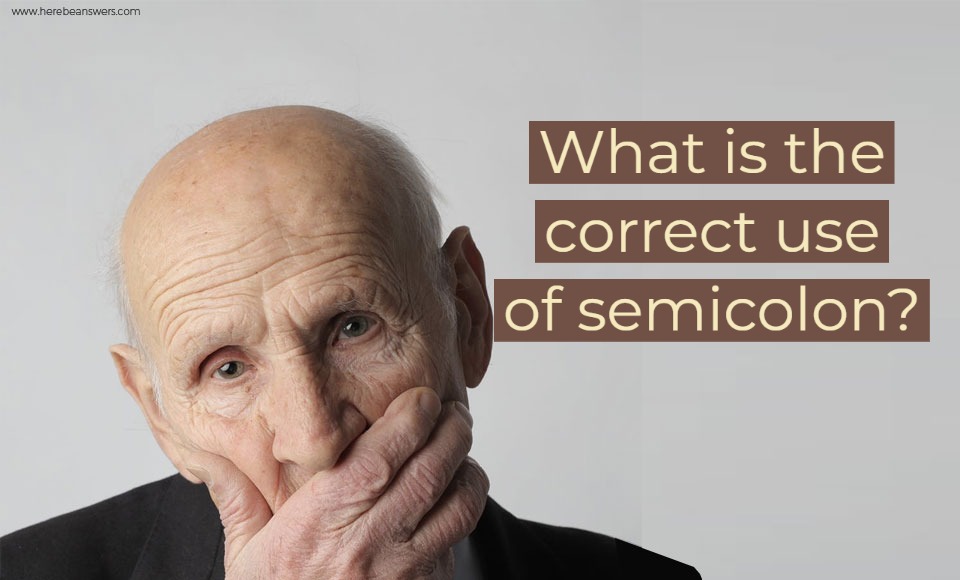Semicolons are typically used to link two related clauses into a single sentence. The correct usage of the symbol in a sentence would be:
“I wanted to go to KFC; she wanted Pizza Hut.”
Both of these ideas, which are you wanting to go KFC and she wanting to eat at Pizza Hut, can exist as separate sentences, and it would still be grammatically correct to write them as such. However, you can link them using a semicolon so that when they’re read out loud, there would be fewer pauses, unlike when reading two sentences. Basically, semicolons are utilized to make sentences simpler and less congested as a structure.
Alternatively, semicolons can be used in exchange for commas when writing a sentence containing a list that might get convoluted or confusing if you just relied on commas to separate the list items. Here is a good example:
“My role models are George Washington, the first president of the United States; Nikolai Tesla, a famous inventor; and my Uncle Stu, who beat cancer.”
If we had just used commas to separate the list items and the sub-clauses, it would be read as though George Washington and “the first president of the United States” were two separate items.
Another use for a semicolon is to connect two quotations in one sentence. To see how this works, let us look at this sentence:
“If someone is home,” he said; “I would like to take a seat at the sofa.”
Connecting two quotations using a semicolon can only work in two instances. First, the first quotation must end in a colon, like the sentence written above. The second instance is when the first quotation ends with a question mark, which is like this sentence:
“Is anybody there?” he asked; “Please answer my question.”
In both of these instances, the comma and the question mark must be followed by the action of the one who said the first quotation.
Other Popular Uses of Semicolons
Besides the English language, the semicolon is also found in other languages, particularly the French, Arabic, and Greek languages.
In the French language, the semicolon is utilized to separate two sentences where a comma and a colon cannot be applied. However, much like in the English language, both sentences must be related to each other in terms of the subject they are talking about or the idea.
For the Arabic language, the semicolon is found between two related phrases, but the semicolon must be inverted, so the dot will have to be at the bottom while the comma is at the top. In addition, the semicolon is also used in the language to separate the problem found in the first phrase and the reason for the issue in the second phrase.
The Greek language uses the semicolon differently, as they often write it in their sentence to serve as a question mark. The use of the semicolon as a question by the Greeks can be compared to how the Latin writes the question mark, which is also shaped like a semicolon.
In Mathematics, the semicolon separates multiple variables in a parameter. Here is an example of how the semicolon is utilized in that manner:
(a1, a2, …; b1, b2, …; c1, c2, …)
You would notice that the semicolon is placed when the letter moved from “a” to “b.” The ellipses mean that the numbers belonging to the “a” variable are continuous, so the best way to separate continuous numbers is by using a semicolon at the end of the ellipses.
In social media and chat boxes, the semicolon is written before an open parenthesis to create a winking emoji, which looks like “;).” The semicolon symbol is sometimes used to indicate that the one who typed it is crying, although this is rarely used since the most common crying emoji is “T_T.”
There is an organization called Project Semicolon, which focuses on anti-suicide awareness, that uses the semicolon to symbolize that life should continue, since the symbol is usually utilized to continue a sentence and not end it like a period or dot. The sentence could be compared to life; those who have suicidal thoughts would often think about ending their “sentence” or life with a period, but the organization encourages them to keep on living by writing a semicolon in their life instead. Because of the success of Project Semicolon is various countries, the semicolon became one of the most prominent symbols of suicide prevention.
